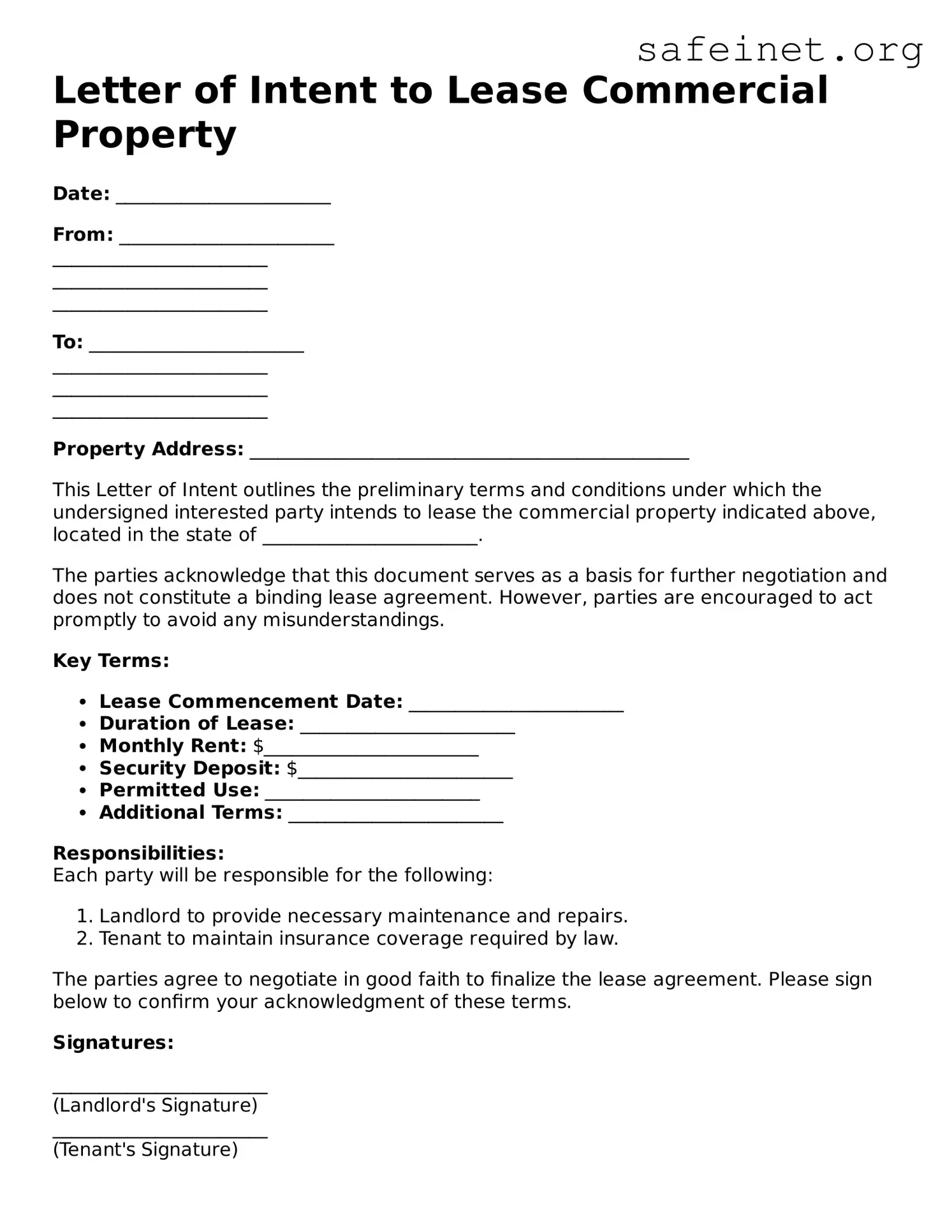The Letter of Intent (LOI) to Lease Commercial Property serves as a preliminary agreement expressing the intent of a potential tenant to lease space. It shares similarities with a Memorandum of Understanding (MOU). Like an LOI, an MOU outlines mutual intentions and basic terms between parties; however, while an LOI often leads towards a formal lease, an MOU might not result in a binding contract, focusing instead on establishing common goals and understanding among participants.
Another document akin to the LOI is a purchase offer. In real estate transactions, a purchase offer provides specific terms, including price, contingencies, and other key elements regarding the sale of property. Similar to an LOI, it acts as an initial step in formal negotiations, paving the way for a more comprehensive agreement once both parties reach a consensus.
A Term Sheet also bears resemblance to the LOI. This document summarizes the main points of a proposed transaction before formal agreements are drafted. It helps parties agree on critical details, much like an LOI, which frames the basic terms and intentions regarding leasing the commercial property.
Negotiation summaries are another document that aligns with the LOI. After discussions, parties may produce a summary that outlines the main aspects agreed upon. Similar in function to an LOI, it captures the essence of what was discussed, setting the stage for formal contracts to follow.
An Exclusivity Agreement can also be compared to the LI. This document ensures that the landlord agrees not to lease to other parties during a set negotiation period. Like an LOI, it provides essential insights into the ongoing negotiations and can be a stepping stone to developing a full leasing agreement.
In addition, a Letter of Intent for Joint Venture operates in a similar manner. This document outlines the basic terms and goals of a joint venture, much like the LOI. Both serve as initial frameworks guiding parties toward more structured legal agreements by highlighting their respective interests and expectations.
A Confidentiality Agreement (NDA) also shares some characteristics with the LOI. While the LOI discusses intentions and terms, the NDA safeguards sensitive information shared during the negotiation process. Both documents are crucial in maintaining trust while paving the way for eventual formal agreements.
Similarly, the Business Proposal can function like an LOI. When an entity wishes to propose leasing terms to potential landlords, the business proposal outlines relevant ideas and needs. Though it might be less focused on specific terms, its purpose is to initiate dialogue, akin to the LOI's role in facilitating leasing negotiations.
A Lease Application is close to the LOI in that it establishes intent from the tenant's side. While an LOI outlines proposed terms from the landlord’s perspective, a lease application showcases the tenant's needs and desires for the property, steering both parties towards an eventual agreement.
Lastly, a Draft Lease, which contains the essential terms and conditions for leasing property similar to the LOI, serves to initiate more formal discussions. It outlines obligations, rights, and expectations in greater detail, while an LOI merely hints at these concepts to foster negotiations.
